The Adventures of Alexander von Humboldt Andrea Wulf and Lillian Melcher Pantheon (2019)
Four years ago, the historian Andrea Wulf rescued Prussian naturalist Alexander von Humboldt (1769–1859) from relative international obscurity with her delightful biography, The Invention of Nature.
To celebrate the 250th anniversary of Humboldt’s birth this year, Wulf has teamed up with artist Lillian Melcher to create The Adventures of Alexander von Humboldt, a graphic work of non-fiction depicting Humboldt’s five-year exploration of Latin America as a young man.
It was a time when scientists had become obsessed with measuring and documenting all aspects of their environment, from human features to the elevation of hills. But no one took investigation of the environment further than Humboldt — and no one thought as seriously about how the measurements could be integrated into a holistic understanding of our globe.
The tale of adventure and discovery is well suited to the graphic format, and Wulf and Melcher do it proud. The informative, light-hearted text and inventive illustrations bring Humboldt’s rumbustious character to life as he drags his small posse of companions well beyond their comfort zones: up smouldering volcanoes, down treacherous mineshafts, along crocodile-filled rivers, through rainforests thick with mosquitoes.
The travellers carried the most up-to-date scientific instruments — often decidedly fragile — to measure as many physical parameters as they could. (Humboldt’s precious barometer, with its modest supply of spare glass tubes, makes frequent appearances in the book.) They also carried plenty of notebooks: Humboldt meticulously recorded each measurement taken and each species of flora or fauna encountered. Melcher often arranges her illustrations in collage compositions using pages from these notebooks.
Reading about Humboldt’s extraordinary achievements makes you wonder how he ever came to have been so forgotten outside Germany. His appetite for knowledge was voracious and he let nothing — not even personal danger — stand in the way of gathering data on every aspect of the natural world.
His capacity for synthesizing knowledge was equally vast, allowing him to build up his major theory that everything in nature is connected (reaching fruition in his massive 1845–62 tome Cosmos; see A. Abbott Nature 431, 631; 2004). Perturbing any element of nature’s giant web, whether a species or a local climate, will have knock-on effects, he argued. He presciently warned, for example, that deforestation could harm the climate and environment, because forests moisten and cool the atmosphere and prevent soil erosion.
He was friends with other intellectual giants of his time, including polymath Johann Wolfgang von Goethe, and Charles Darwin acknowledged the intellectual debt he owed Humboldt. Many phenomena are named after him, from the Humboldt Current that flows along the western coast of South America to the stately Humboldt Peak in Colorado’s Rocky Mountains. Numerous plant and animal species bear his name, too — and many German cities have a Humboldtstrasse.
Humboldt was a liberal who vocally opposed slavery. He was a driven and highly focused scientist. He was a man of near-infinite self-confidence. The Adventures of Alexander von Humboldt offers a splendid way to begin to know him.
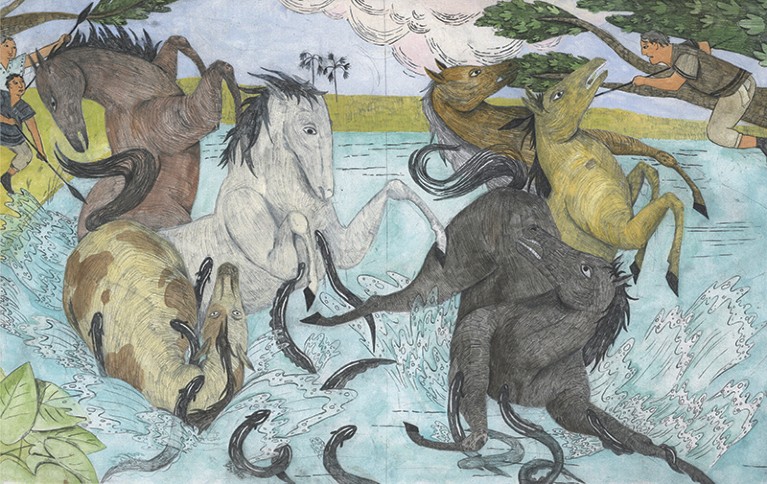
Credit: Written by Andrea Wulf, Illustrated by Lillian Melcher
In the Amazon, Indigenous people showed him how they used horses to catch electric eels (Electrophorus electricus). Humboldt then used the fish in experiments (including some on himself) to understand the peculiar properties that enable them to stun prey and predators with electric shocks.
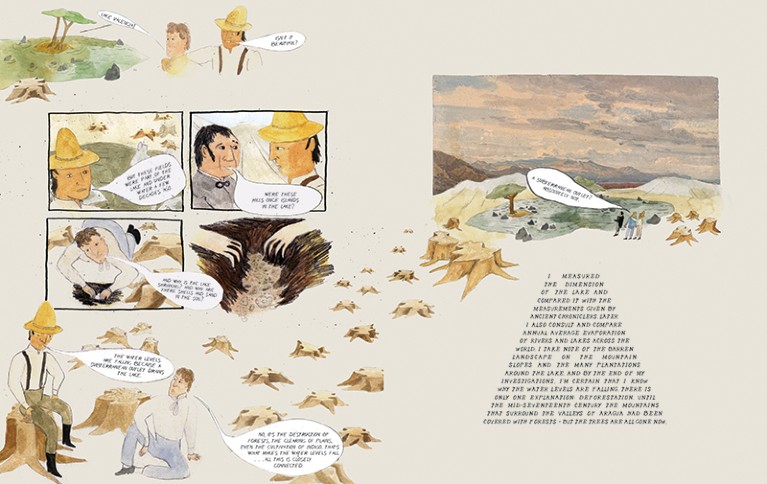
Credit: Written by Andrea Wulf, Illustrated by Lillian Melcher
Combining his own observations with known information, he concluded that Lake Valencia in Venezuela was shrinking because surrounding forests had been cleared.
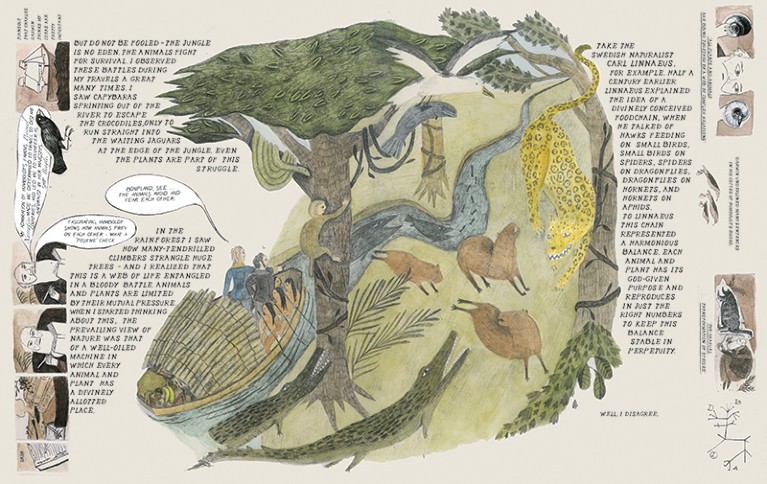
Credit: Written by Andrea Wulf, Illustrated by Lillian Melcher
He challenged the view of revered Swedish naturalist Carl Linnaeus that nature is kept in harmonious balance by a divine plan. Nature, Humboldt observed, is much more brutal than that.
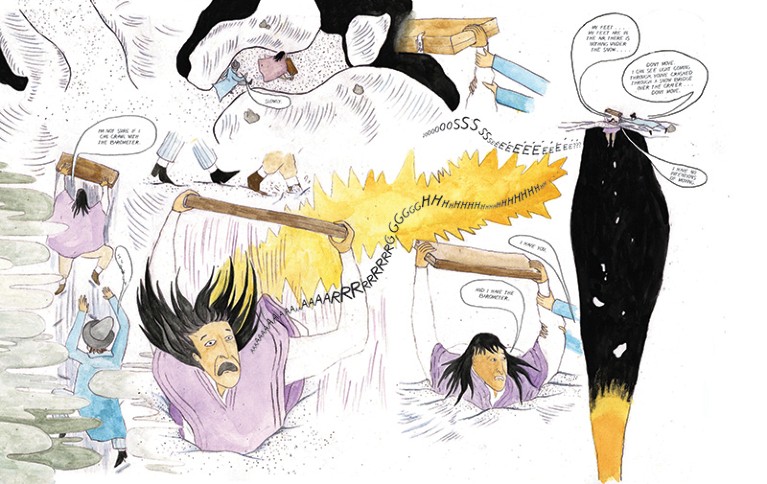
Credit: Written by Andrea Wulf, Illustrated by Lillian Melcher
His explorations put him and his less intrepid companions in danger, but his concern was always for his instruments.
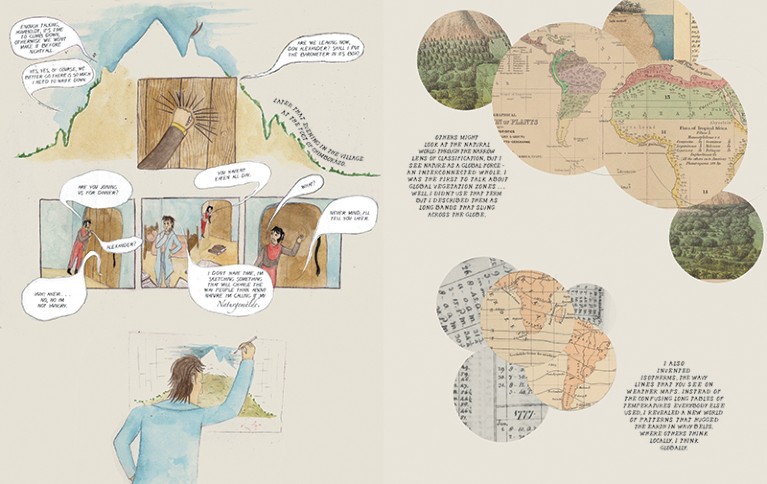
Credit: Written by Andrea Wulf, Illustrated by Lillian Melcher
He invented isotherms, the wavy lines — now familiar from weather maps — that link areas around the globe that have the same temperature.
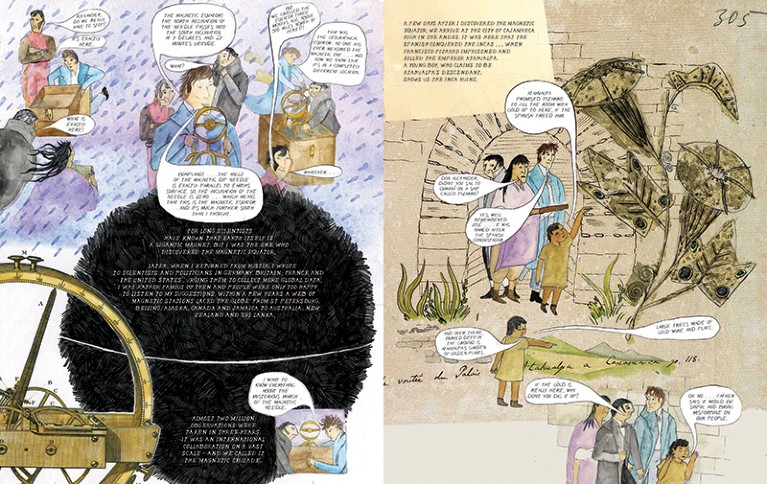
Credit: Written by Andrea Wulf, Illustrated by Lillian Melcher
He discovered the position of Earth’s magnetic equator.
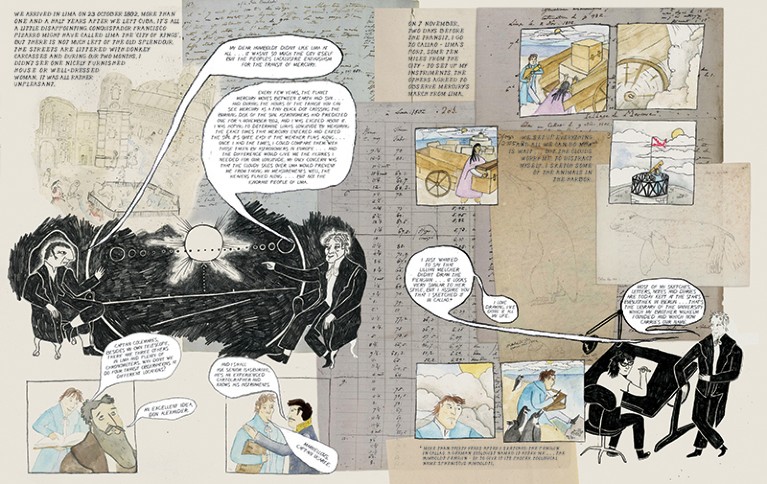
Credit: Written by Andrea Wulf, Illustrated by Lillian Melcher
He observed the 1802 transit of Mercury across the Sun, which allowed him to calculate the longitude of Lima.

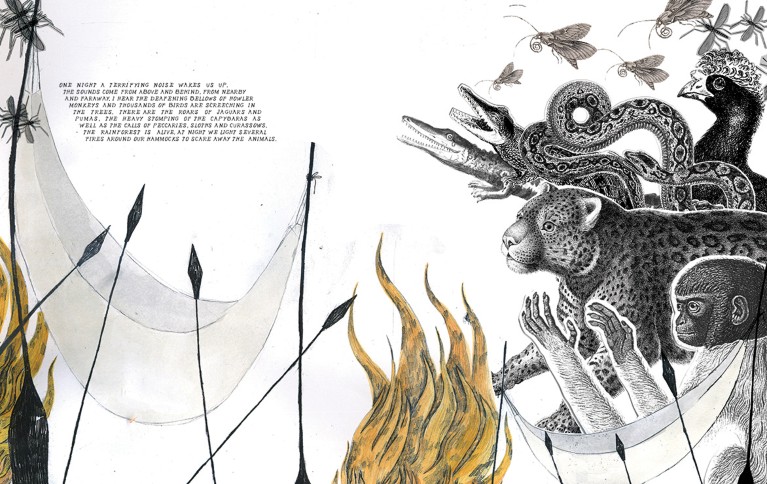
 The imperial roots of climate science
The imperial roots of climate science
 In search of adventure
In search of adventure
 Lives after death
Lives after death








